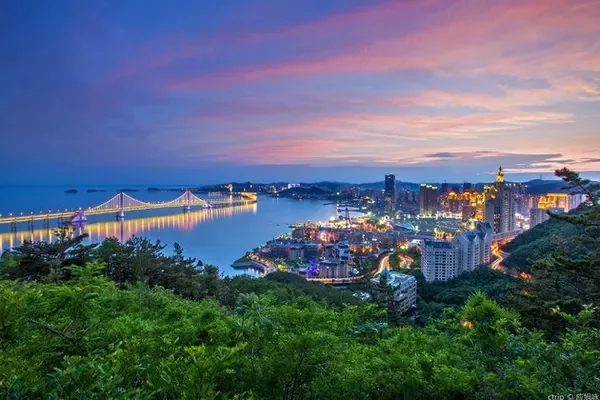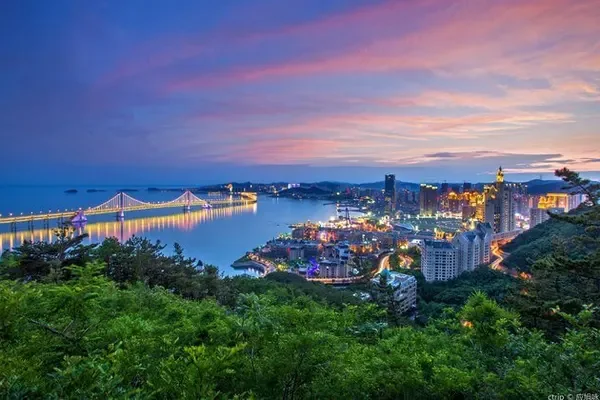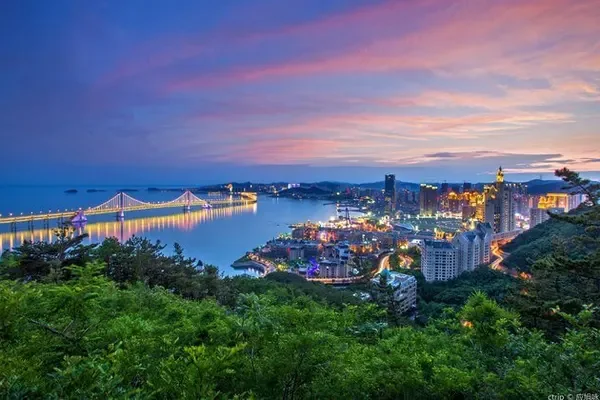floating in the world
struggling with the years
walk through the sea of people
Just to find a touch of blue in that dream
01 Culture
The city of Yining is full of people coming and going, but people never stop there. They just use it as a transfer station, and then rush to the next destination after a short rest: Sailimu Lake, Huocheng, Urumqi , Nalati... But she didn't know that Yining's real beauty was hidden in the streets and alleys.
flower city
Yining is also known as "Gulistan", and "Guli" means "flower" in Uyghur. Historically, the name of Yining has evolved through the city of Zheshimi (Jasmine City) - Guliza City (Garden City) - Guleza City (Panyang City).
Yining people's love for flowers has been deeply rooted in their bones. All kinds of trees and flowers can be seen everywhere in the streets and alleys, as well as potted plants in front of the windows, flower shops that are often seen in the corners, and flower sellers riding tricycles through the streets. hawker.
Every household in Germany raises flowers outside for everyone to enjoy. And the people of Yining are not stingy, and Yining, surrounded by flowers, is like spring all the year round. The title of "Jiangnan beyond the Great Wall" is not inferior to Germany at all.
residential
Walking into Yining, you will be amazed by the bright colors of the folk houses here. The houses are mainly blue, mixed with green, red, yellow, purple and many other colors. The architectural style is a mixture of Islamic and European styles. The door couplets are floral decorations mixed with ink paintings and oil paintings, and the contents are mostly landscapes and figures in Xinjiang. Every house is beautifully repaired with colors, flowers, pigeons, and vines.
The most representative of the folk houses is Kazanqi located in the southeast of Yining City. "Kazan" means "pot" in Uighur, and "Qi" refers to people who are engaged in the industry of making and selling pot.
Historically, Kazanqi used to be the center for the production and sales of Yili ethnic handicrafts. Most of the local residents made their living by casting pots and selling pots. handicrafts for sale).
street
The characteristics of large mixed and small settlements in Xinjiang are particularly evident in Liuxing Street. From the old mottled wooden railings to the rusty window lattices, you can feel the traces of time here everywhere, and more of them are Uyghur buildings full of strong Islamic style and Russian iron-clad pointed wooden houses.
When you step out of the alley, you will see the busy asphalt road street. The constant flow of traffic forms a huge contrast with the old traces of time in the alley. "Busy city leading to tranquility" may be the best word to describe Liuxing Street, where the ancient and modern are peacefully performed on Liuxing Street.
Strolling along Development Township Street and Xinhua West Road is the most pleasant place. The lanes are quiet and the houses are beautiful. Every household looks more peaceful and prosperous, just like a European town. If you look inside and outside the house with your eyes open, you will not be regarded as an intruder. You will find that the local people are so friendly and hospitable.
nationality
Walking on the streets of Yining, what we hear is a language completely different from our system, and what we pass by are men and women with high nose bridges and big eyes. Crowds of people wearing colorful and distinctive ethnic minority costumes moved around us like a rainbow.
Yining is a multi-ethnic city, inhabited by 37 ethnic groups including Uygur, Han, Kazak, Hui, Mongolian, Xibe, Uzbek, and Russian.
If you want to know more about the Russian people in Yining, the best place is the Orthodox Church. The best way to understand the Uyghurs is to walk into their homes. If you want to know about Uzbeks, it is best to go to the most famous Izhaier ice cream shop in Kazanqi.
02 Travel photography
Hanren Street
Yining's rich historical and cultural heritage has attracted many people to come here not only for its humanities, but also for its scenery.
In Yining City, Xinjiang, there is a famous "Hanren Street". In the old days, Hanren Street was called Daqiao Banzi. Interestingly, there were almost no Han people in Hanren Street. Hanren Street always exudes a strong ethnic atmosphere and taste of life, where you can experience various delicacies and ethnic customs.
The pedestrian street is as lively as a market, where the people passing by rub shoulders, the peddlers are enthusiastic and generous, the compatriots of all ethnic groups are regardless of each other, men, women and children all show their abilities. Coupled with the sound of booing and asking for warmth, and the sound of bargaining, the whole street seems to be full of enthusiasm and open-minded.
Women selling milk skins, girls selling Usman grass, Balang selling flower hats and Yingjisa knives, Uyghur uncles selling naan, etc. The rich style of this street makes Ili people love each other. The guests said: It would be a pity not to visit "Hanren Street" when you come to Yili.
Folk Village
Kazanqi Folk Custom Tourist Area is the only large-scale original ecological cultural scenic spot in northern Xinjiang with Uyghur ethnic customs as the main body. It is not only a window of the image of Yili city, but also a true portrayal of ethnic customs. Blue has been the main color of their houses for hundreds of years. Every house here has a different blue color. Although the blue is amazing, it is not dazzling, but it is fresh and peaceful.
There is a big contrast with the bustling atmosphere of the commercial street. The winding paths are full of pink, pink, and pink-green huts. The doors are all ajar, and there is no sense of distance between every house.
Aunts chatting in front of their house, uncles playing chess, pigeons flying overhead from time to time, residents passing by on bicycles, tricycle vendors selling small commodities, and the figures of children playing are all vividly performed here.
Lavender
When it comes to lavender, I think many people's first reaction is Provence in France, but in Xinjiang, there is a place that is very similar, and that is Huocheng, known as the "Hometown of Lavender in China".
How can you miss the Huocheng lavender in the neighboring county when you come to Yining? The blue sky and clean sunshine are like large lavenders with deep purple waves. Aren’t these pure colors the memories of dreams?
When lavender blooms, the sea of purple-blue flowers fluctuates with the wind, like a dream stretching on the earth. For several miles around, they are shrouded in the rich fragrance of lavender. Its taste is faint, but extremely penetrating, as if it can penetrate into the blood and soul, and only by experiencing it can one know the taste.
03 Foodies
Many people's impression of eating in Xinjiang is naan and barbecue, and only when they really come to the local area can they break the prejudice that "Xinjiang only has barbecue and naan". Xinjiang has a wide variety of foods with excellent tastes, making it a paradise for foodies.
pull sliver
Latiaozi, also known as noodles, is the most important meal in Xinjiang, and it is more flavorful than any pasta. There are dozens of kinds of noodles in Xinjiang, among which the most popular one is the oily pork noodles.
The oily pork originating from Shanxi has been fused in Xinjiang, adding tomatoes and Pi Yazi (onion) has become another flavor, but it does not hinder the deliciousness of mixing in the noodles at all. It is as popular as donburi.
Red willow barbecue
In Xinjiang, barbecue is the light of life. Red willow kebabs originated from southern Xinjiang. They pay attention to using large pieces of meat and roasting them over high heat so that the gravy can be locked in and the taste will not be too dry. The red willow barbecue is different from the general iron branch barbecue. It uses red willow branches cut into wooden sticks to skewer the lamb, which adds a bit of tree fragrance and is more authentic.
There are red willow trees growing everywhere in Xinjiang, and the materials are collected locally, which is very environmentally friendly. On the streets of Yining, you can see the cut red willow branches neatly placed on the stalls.
face lung
Every place has a "dark cuisine" that makes people's scalp tingle, but "eats" without changing their hearts. Yining is none other than Mian Lung Zi, and Mian Lung Zi and rice intestines usually appear in pairs. This delicacy looks very ugly, but it is loved by men, women and children.
Fill the lamb intestines with rice, lamb liver, heart and spices, etc., cut into small pieces, and eat them together with noodles, lungs and gluten. It tastes great.
baked buns
Baked buns are the most representative Xinjiang-style delicacy of the Uyghurs. Baked buns are unique in the country, and their cooking methods, varieties of colors and nutritional components are very unique. It is made of half-fat and half-lean mutton and leather teeth, folded into square dead dough, and baked on the wall of the naan pit.
The skin of the buns is yellow and bright, the skin is crispy and the meat is tender, and the taste is fresh and oily, which is endless aftertaste.
Yining is not only these
2019 Follow the Adventures of Borderlands
13 days classic loop
Into Yining
Exploring its beauty deeply



